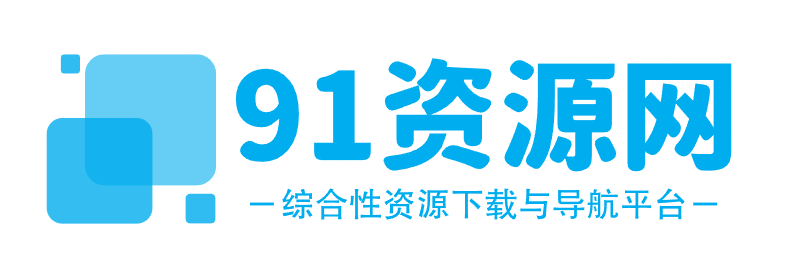java 框架可通过以下三种方式集成 ai 技术:通过 api 访问、使用 java 客户端库以及采用开放标准。api 访问可轻松使用 ai 提供商提供的各种 ai 服务。java 客户端库允许直接与 ai 服务交互,简化了集成过程。开放标准如 protocol buffers 或 grpc 可实现与提供商无关的 ai 集成。Java 框架与人工智能 (AI) 的集成方法
随着 AI 在企业中的普及,将 AI 技术集成到 Java 应用程序变得越来越重要。以下是常见的方法:
- 通过 API 访问
立即学习“Java免费学习笔记(深入)”;
使用 AI 提供商提供的 API,如 Google Cloud AI Platform 或 AWS SageMaker,可以轻松地访问各种 AI 服务,包括机器学习、自然语言处理和计算机视觉。import com.google.cloud.aiplatform.v1.EndpointServiceClient;
import com.google.cloud.aiplatform.v1.EndpointServiceSettings;
import com.google.cloud.aiplatform.v1.PredictRequest;
import com.google.cloud.aiplatform.v1.PredictResponse;
import java.io.IOException;
public class AiApiExample {
public static void main(String[] args) throws IOException {
// Set the endpoint URI
String endpoint = "YOUR_ENDPOINT_URI";
// Initialize the client
EndpointServiceSettings settings = EndpointServiceSettings.newBuilder().build();
EndpointServiceClient client = EndpointServiceClient.create(settings);
// Prepare the prediction request
PredictRequest.Builder requestBuilder = PredictRequest.newBuilder();
requestBuilder.setEndpoint(endpoint);
// Add the input data here
PredictRequest request = requestBuilder.build();
// Perform the prediction
PredictResponse response = client.predict(request);
// Process the prediction response
// ...}
}登录后复制2. 使用 Java 客户端库一些 AI 提供商提供 Java 客户端库,允许直接与 AI 服务交互,从而简化了集成。import com.google.cloud.automl.v1beta1.ImageClassificationPredictResponse;
import com.google.cloud.automl.v1beta1.PredictRequest;
import com.google.cloud.automl.v1beta1.PredictRequest.ParamsEntry;
import com.google.cloud.automl.v1beta1.PredictResponse;
import com.google.cloud.automl.v1beta1.PredictionServiceClient;
import com.google.cloud.automl.v1beta1.PredictionServiceSettings;
import java.io.IOException;
import java.nio.file.Paths;
public class AiClientLibExample {
public static void main(String[] args) throws IOException {
// Set the endpoint URI
String endpoint = "YOUR_ENDPOINT_URI";
// Set the prediction input
String filePath = "YOUR_IMAGE_FILE_PATH";
// Initialize the client
PredictionServiceSettings settings =
PredictionServiceSettings.newBuilder().build();
PredictionServiceClient client = PredictionServiceClient.create(settings);
// Prepare the prediction request
PredictRequest.Builder requestBuilder = PredictRequest.newBuilder();
requestBuilder.setEndpoint(endpoint);
requestBuilder.putParams(
"score_threshold", ParamsEntry.newBuilder().setDoubleValue(0.5).build());
requestBuilder.addImage(Paths.get(filePath));
PredictRequest request = requestBuilder.build();
// Perform the prediction
PredictResponse response = client.predict(request);
// Process the prediction response
for (ImageClassificationPredictResponse prediction :
response.getPayloadList().expandList().getImageClassification()) {
// Process the prediction result
// ...
}}
}登录后复制3. 使用开放标准如 Protocol Buffers 或 gRPC,可用于与 AI 服务通信。通过这种方法,可以实现与提供商无关的 AI 集成。import com.google.protobuf.ByteString;
import io.grpc.ManagedChannel;
import io.grpc.ManagedChannelBuilder;
import io.grpc.StatusRuntimeException;
import org.tensorflow.framework.TensorShapeProto;
import org.tensorflow.framework.TensorProto;
import org.tensorflow.serving.apis.Model;
import org.tensorflow.serving.apis.PredictRequest;
import org.tensorflow.serving.apis.PredictResponse;
import org.tensorflow.serving.apis.PredictionServiceGrpc;
public class AiOpenStandardExample {
public static void main(String[] args) throws Exception {
// Set the server address
String serverAddress = "YOUR_SERVER_ADDRESS";
// Connect to the server
ManagedChannel channel =
ManagedChannelBuilder.forTarget(serverAddress).usePlaintext().build();
PredictionServiceGrpc.PredictionServiceBlockingStub stub =
PredictionServiceGrpc.newBlockingStub(channel);
// Prepare the prediction request
TensorProto input = TensorProto.newBuilder()
.addDtype(TensorProto.DataType.DT_FLOAT)
.addShape(TensorShapeProto.getDefaultInstance())
.addFloatVal(1.0f)
.addFloatVal(2.0f)
.build();
PredictRequest request = PredictRequest.newBuilder()
.setModel(Model.newBuilder().setName("YOUR_MODEL_NAME").build())
.putInputs("input1", input)
.build();
// Perform the prediction
try {
PredictResponse response = stub.predict(request);
// Process the prediction response
TensorProto output = response.getOutputsMap().get("output1");
float prediction = output.getFloatVal(0);
// ...
} catch (StatusRuntimeException e) {
// Handle error
e.printStackTrace();
}}
}登录后复制以上就是java框架与人工智能(AI)的集成方法有哪些?的详细内容,更多请关注php中文网其它相关文章!





MP6 天前
发表在:MagicEXIF通用注册机 v1.13明亮的 旅行分享! 做得真好。
BrendanWaida10 天前
发表在:11日20日,星期四,在这里每天60秒读懂世界!При выборе автономно...
JosephJaf13 天前
发表在:MagicEXIF通用注册机 v1.13我尊重这样的项目, 这里展示真正的旅游。...
Frankcic13 天前
发表在:11日20日,星期四,在这里每天60秒读懂世界!Для блога может быть...
Stevedaf22 天前
发表在:MagicEXIF通用注册机 v1.13所有文章都令人印象深刻。继续保持 真诚。...
Stevedaf23 天前
发表在:Intel XTU中文补丁 1.13我经常访问 关于旅行的资源。有趣阅读游记...
Stevedaf23 天前
发表在:MagicEXIF通用注册机 v1.13我常常想, 能像你们一样多旅行。感谢激励...
Stevedaf23 天前
发表在:Intel XTU中文补丁 1.13很高兴阅读 有用的内容。十分 很有意思。...
Stevedaf23 天前
发表在:MagicEXIF通用注册机 v1.13我早就想, 能像你们一样多旅行。谢谢启发...
Stevedaf23 天前
发表在:Intel XTU中文补丁 1.13我一直梦想, 那么放松地度假。感谢激励。...